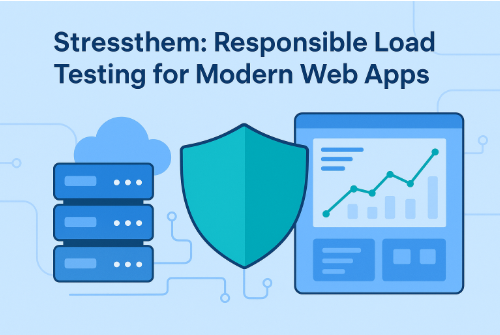Modern web applications must withstand sudden traffic spikes, real user volume, and attack-like conditions caused by misconfiguration or malicious actors. Stressthem is positioned as a platform for authorized load testing and traffic simulation that helps developers, SREs, and security teams measure performance, find bottlenecks, and validate mitigation strategies — all while complying with legal and ethical guidelines.
This article explains what responsible load testing looks like, how Stressthem supports web teams, and best practices to run tests without harming third parties.
What is Stressthem?
Stressthem is a traffic simulation and load-testing solution designed to emulate real user behavior and high request volumes against web services. Its goal is to help teams answer key questions:
- How does the service behave under high concurrent connections?
- Where are the performance bottlenecks (app, DB, CDN)?
- Do rate limits, WAF rules, and cache strategies hold under stress?
- Can incident response and auto-scaling policies react correctly?
Importantly, Stressthem should be used only for authorized tests, where the tester has explicit permission to generate load against the target.
Key Features & Benefits
- Realistic Traffic Simulation: Model user sessions, varied request patterns, and API calls to reproduce peak loads.
- Layer-7 Scenario Testing: Emulate HTTP/HTTPS workloads (page views, API requests) to verify application-level resilience.
- Metrics & Reporting: Collect latency, error rates, throughput, and resource utilization for root-cause analysis.
- Safe Execution Controls: Built-in safeguards such as test windows, rate caps, and mandatory authorization workflows to prevent accidental misuse.
- Integration Friendly: Connect with CI/CD pipelines to run performance checks before production deploys.
Responsible & Legal Use
Running load tests without explicit authorization is unlawful and harmful. Follow these rules:
- Get Written Permission: Only run tests on systems you own or where you have documented consent.
- Notify Stakeholders: Inform ops, security, and upstream providers before the test window.
- Define Safe Guardrails: Use throttles, ramp-ups, and kill switches. Limit test durations and target endpoints.
- Test in Staging if Possible: Reproduce production traffic in isolated environments first.
- Comply with Laws & TOS: Ensure tests don’t violate terms of service or local regulations.
How to Plan an Effective Load Test
- Set Goals: Define KPIs such as latency, error rates, and max throughput.
- Create Realistic Scenarios: Model actual user flows — login, search, checkout — not just raw request floods.
- Ramp Traffic Gradually: Use stepped increases to identify breaking points.
- Monitor Everything: Observe servers, application logs, databases, and network components.
- Post-Test Analysis: Correlate metrics, reproduce issues, and prioritize fixes.
Use Cases
- Validate auto-scaling rules under realistic traffic growth.
- Verify WAF or rate-limiting rules react properly to traffic surges.
- Test CDN cache hit ratios and offload under load.
- Validate incident runbooks and alerting thresholds.
Frequently Asked Questions
Is it legal to use Stressthem against a public website?
Only with explicit permission from the site owner. Unauthorized load testing can be illegal and harmful.
Will Stressthem bypass security controls like CDNs or WAFs?
A legitimate tool should never promote bypassing security controls. The aim is to test defenses with authorization, not to circumvent them.
Can I automate load tests in CI?
Yes — automate safe, limited performance checks as part of pre-deployment pipelines, using test accounts and isolated environments.
Conclusion
If you’re interested in performance validation, adopt a compliance-first approach. Use Stressthem-style load tests only in staging or with written authorization in production. Work with your security team to create a testing policy and run scheduled, controlled experiments to strengthen reliability.


